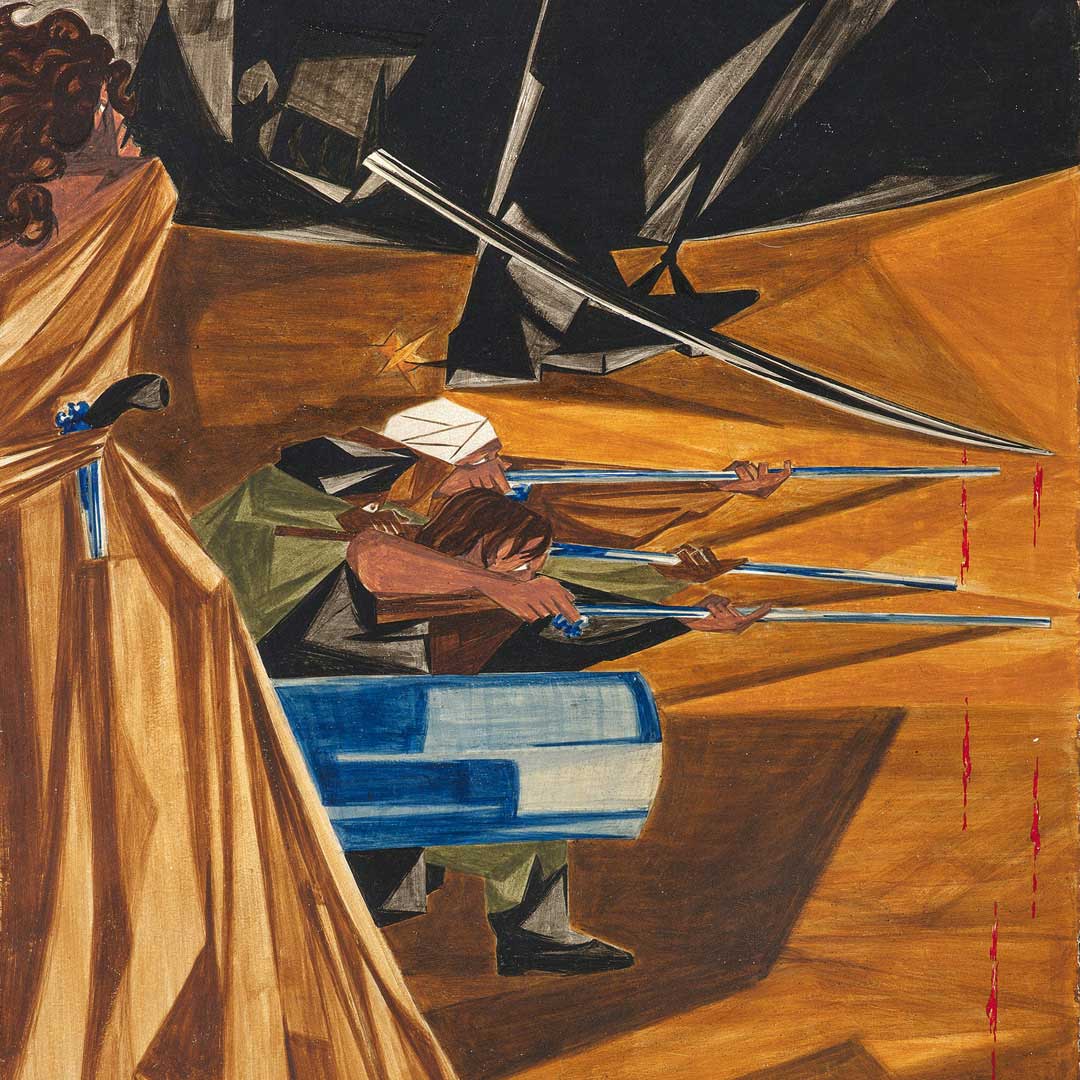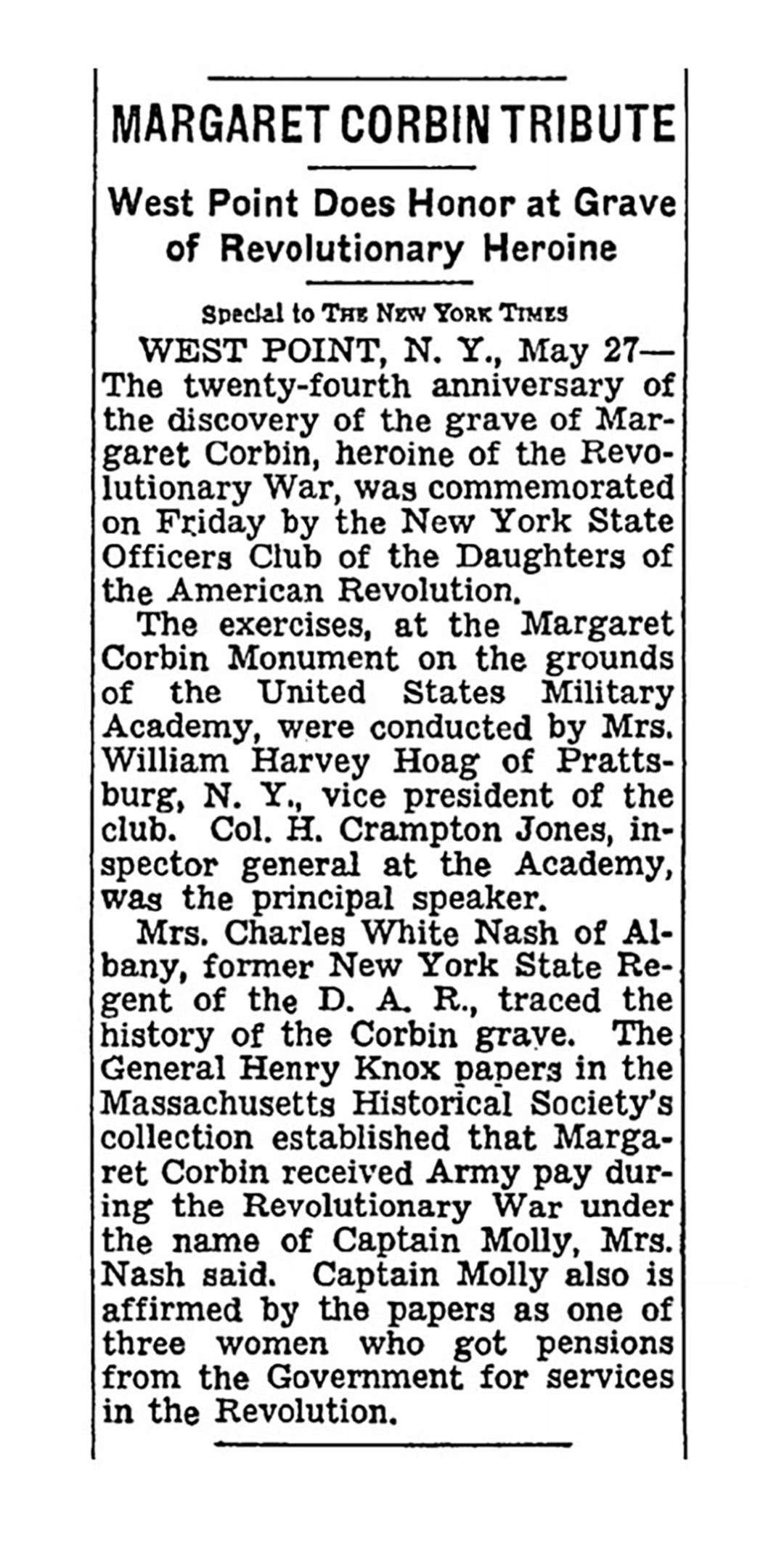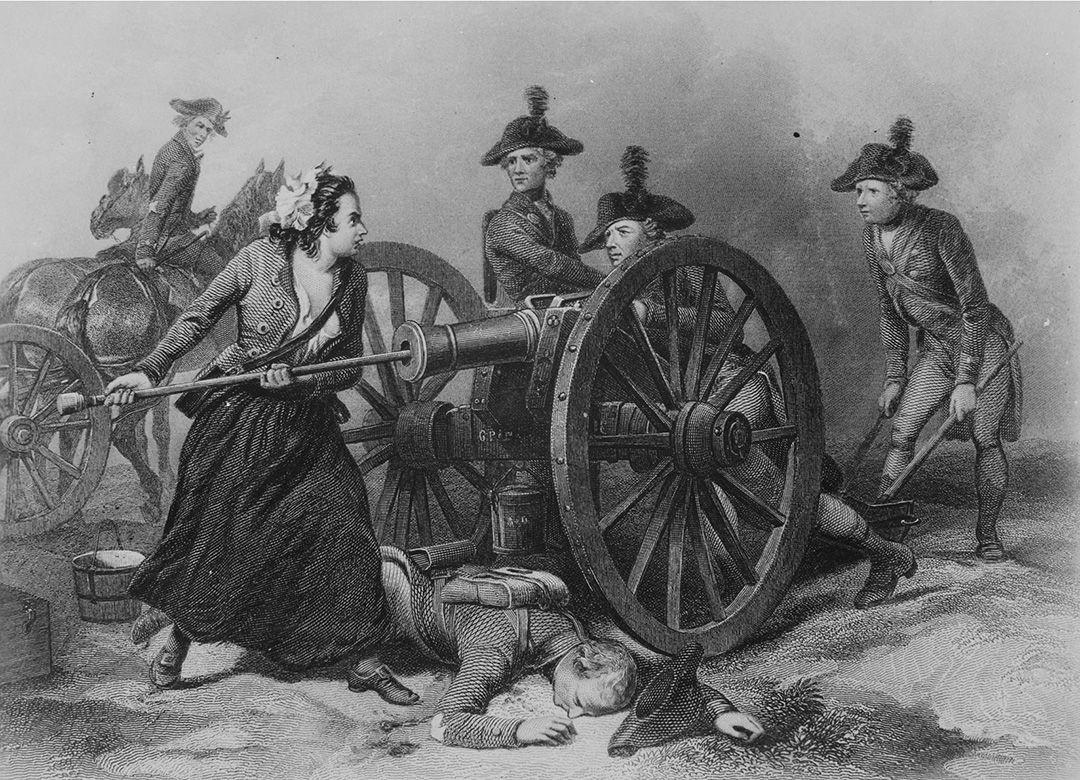Read Closer
Lawrence might have seen this 1950 New York Times article that commemorated the recognition of American Revolution veteran Margaret Cochran Corbin at West Point. On November 16, 1776, Corbin accompanied her husband into the Battle of Fort Washington on Manhattan Island. When he was killed in action, she bravely filled his post, loading and firing the cannon with great accuracy. Lawrence saw her as an overlooked contributor to the American Revolution and made her the subject of Panel 12.
Excerpt from “Margaret Corbin Tribute; West Point Does Honor at Grave of Revolutionary Heroine,” New York Times, May 28, 1950
WEST POINT, N.Y., May 27— The twenty–fourth anniversary of the discovery of the grave of Margaret Corbin, heroine of the Revolutionary War, was commemorated on Friday by the New York State Officers Club of the Daughters of the American Revolution.
The exercises at the Margaret Corbin Monument on the grounds of the United States Military Academy were conducted by Mrs. William Harvey Hoag of Prattsburg, N.Y., vice president of the club. Col. H. Crampton Jones, inspector general at the Academy, was the principal speaker.
Mrs. Charles White Nash of Albany, former New York State Regent of the D.A.R., traced the history of the Corbin grave. The General Henry Knox papers in the Massachusetts Historical Society’s collection established that Margaret Corbin received Army pay during the Revolutionary War under the name of Captain Molly, Mrs. Nash said. Captain Molly also is affirmed by the papers as one of three women who got pensions from the Government for services in the Revolution.
“Margaret Corbin Tribute; West Point Does Honor at Grave of Revolutionary Heroine,” New York Times, May 28, 1950. © The New York Times Company


